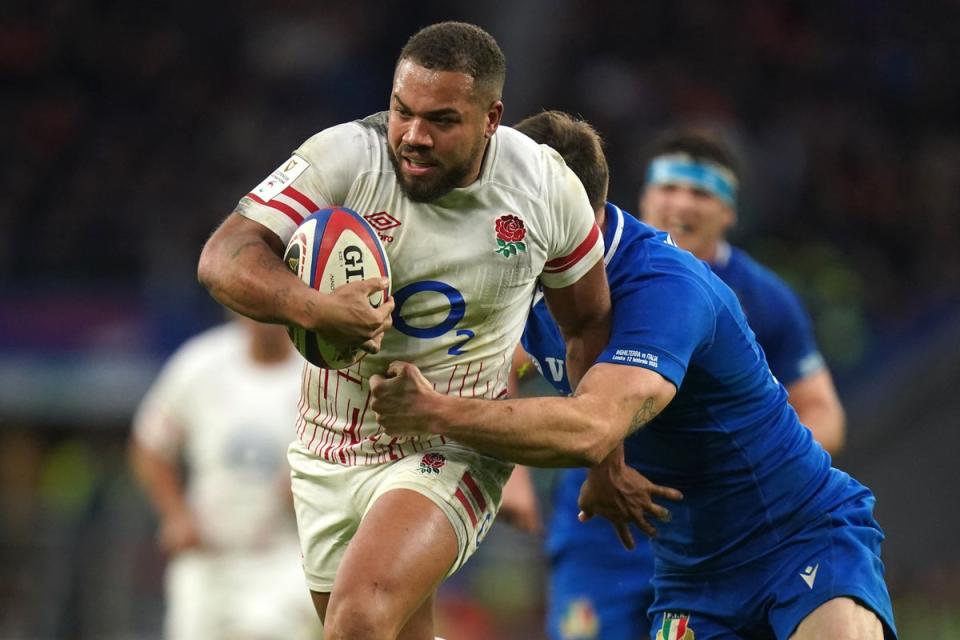Why power-packed pair could hold the key to getting England’s attack firing

It has been a constant question ever since Steve Borthwick became England’s head coach. “Steve, why isn’t England’s attack clicking?”, a member of the media will enquire just about every time the Cumbrian speaks, wondering why the stumbles continue, mentioning the missed opportunities, searching for reasons behind the lacking offensive output.
While their defence, kicking game, and set-pieces have all come on considerably in the 15 months since Borthwick took over, the development of the side’s attacking game, or lack thereof, has been less clear to see. There was an acceptance that England were muddling through the last Six Nations a bit with Nick Evans in the interim role of attacking coach as part of the new staff. Likewise, the World Cup needed a simple gameplan. But the hope ahead of this campaign was that there would be evidence of England kicking on under the tutelage of attack coach Richard Wigglesworth.
The mixed returns in the first two rounds of the tournament suggest that it remains a work in progress. Some of England’s numbers are encouraging: they are trailing only Ireland in the amount of ball they are playing wider than the second receiver (14 per cent) – a significant jump from the World Cup (7 per cent) – in a hint that they are attempting to play more expansively. A higher percentage of their carries have committed two or three defenders than any other nation, suggesting that their forwards are effective at tying people in.
But it, again, hasn’t quite clicked. Why? To start with, England may not, as of yet, be working with their preferred personnel. Indications from inside camp suggested that Borthwick had planned to combine Marcus Smith, Ollie Lawrence and Henry Slade in midfield for the tournament – that two of those three haven’t been available has required the England coaching staff to alter their gameplan to better match their personnel.
Lawrence’s availability for the Calcutta Cup, coupled with the return of Manu Tuilagi, gives Borthwick more options and feels key to getting England’s attack firing. They have sorely lacked carrying threat across the opening two rounds of the tournament. Of the starting centre pairings utilised by the six nations in rounds one and two, the combination of Fraser Dingwall and Slade has offered the least in terms of carrying output.
England’s starting centres have carried the ball into contact less often than any other side.
Starting centre pairing | Carries into contact | Players |
1. Ireland | 35 | Henshaw 15, McCloskey 12, Aki 8 |
2. Scotland | 29 | Tuipulotu 16, Jones 13 |
3. Wales | 28 | Tompkins 15, North 9, Watkin 4 |
4. Italy | 18 | Menoncello 10, Brex 8 |
5. France | 15 | Fickou 9, Danty 6 |
6. England | 13 | Slade 8, Dingwall 5 |
That does not mean the pair are bad players; both are good communicators who offer plenty as distributors. But without inside carrying threat to fix the defensive line, the drift has generally had England’s outside backs handled, making their attack look lateral at times. Lawrence or Tuilagi, if selected against Scotland, should change that.
“They will kick the door down,” assistant coach Kevin Sinfield explained on Tuesday. “When you look across the centre partnerships that we’ve run so far with Fraser [Dingwall] and Slade, they [offer] a bit more ball movement, and probably a bit more finesse at the line.
“I think to have that power in Ollie and Manu available is important to us as we look to find the right balance this week. Moving forward, it gives us some options. Any good coaching team will tell you that having good options enables you to play in different ways. With guys that those two available, it certainly puts the defence in two minds because they’re not quite sure who they’re going to be facing and what it’s going to look like.”

It appears likely that one of Lawrence or Tuilagi will partner Slade, who has been a key leader in England’s defensive revolution, with George Ford again entrusted with the reins. The availability of the power-packed centre pair should complement the skillset of Ben Earl, who has been busy and boisterous in a new, freer attacking role. Tommy Freeman has also impressed off his wing, beating a defender almost every other carry, and roaming dangerously.
Improving efficiency remains key, though. England have threatened regularly on the counter-attack and will expect to receive plenty of ball from a Scottish side that already top the kick metres charts after two rounds. Encouragingly, Freddie Steward and Elliot Daly twice carved Wales open early on – but England failed to create a clear try-scoring opportunity from their good work and also wasted two five-metre set-pieces in the first 10 minutes.
That inability to convert chances has been a theme of their first two games. While accepting that the sample size is small, about 11 per cent of England’s line breaks have been converted into tries so far – only Wales rank similarly. The best sides in the world convert at a rate of over 40 per cent, with England falling just short of that benchmark during the World Cup. It is likely that their number moves towards that tournament mean across the remainder of this Six Nations over a larger sample, but it is clear that seizing the opportunities when they come is something to work on.
It is also notable that England have started against arguably the two softest defences and, perhaps, weakest teams in the competition. The task is about to get significantly tougher: Scotland’s defence under Steve Tandy has been strong in the last two years; Ireland’s Simon Easterby-drilled unit is now statistically the best defence in the world; and it is impossible to imagine Shaun Edwards allowing France’s structure to be as porous as it was in rounds one and two for the rest of the competition.
There is also an understanding in the England camp that there will be glitches within their new defensive system. The Springboks-style blitz embedded by Felix Jones has performed above expectations, but more cohesive attacking units will spot plenty of opportunities to exploit. England will have to score more points to remain in the title chase – attacking improvement is a must if they are to contend for the championship.

